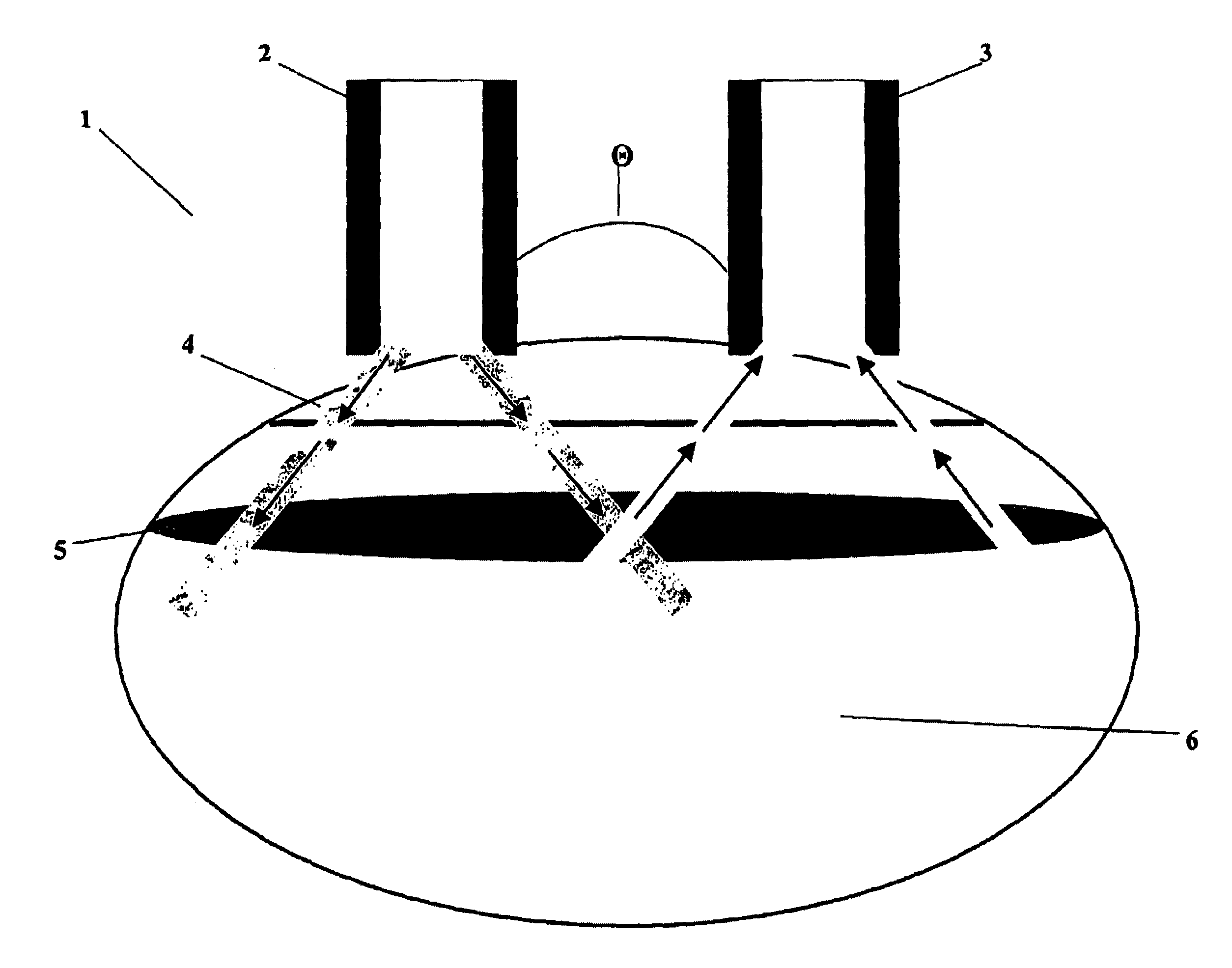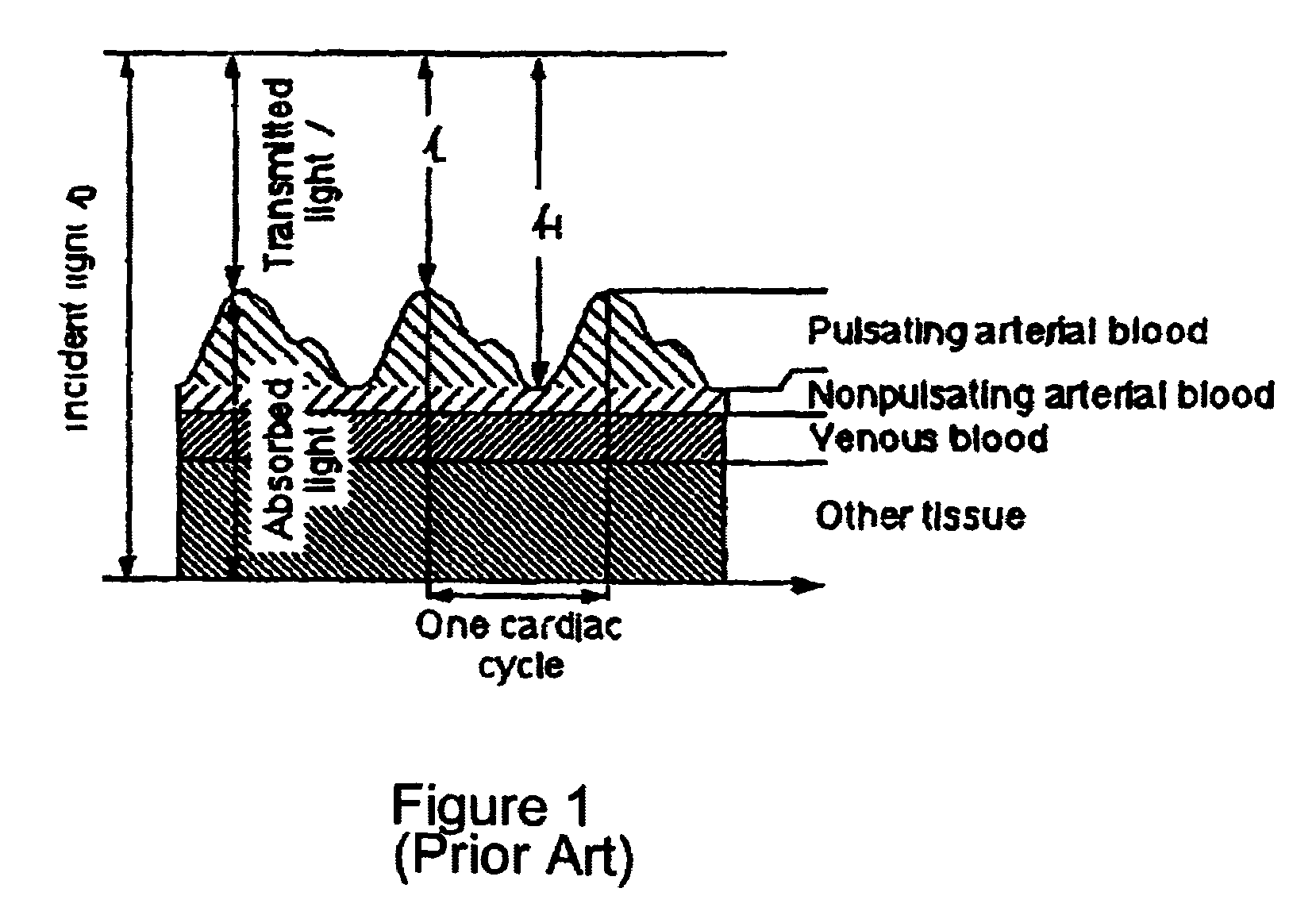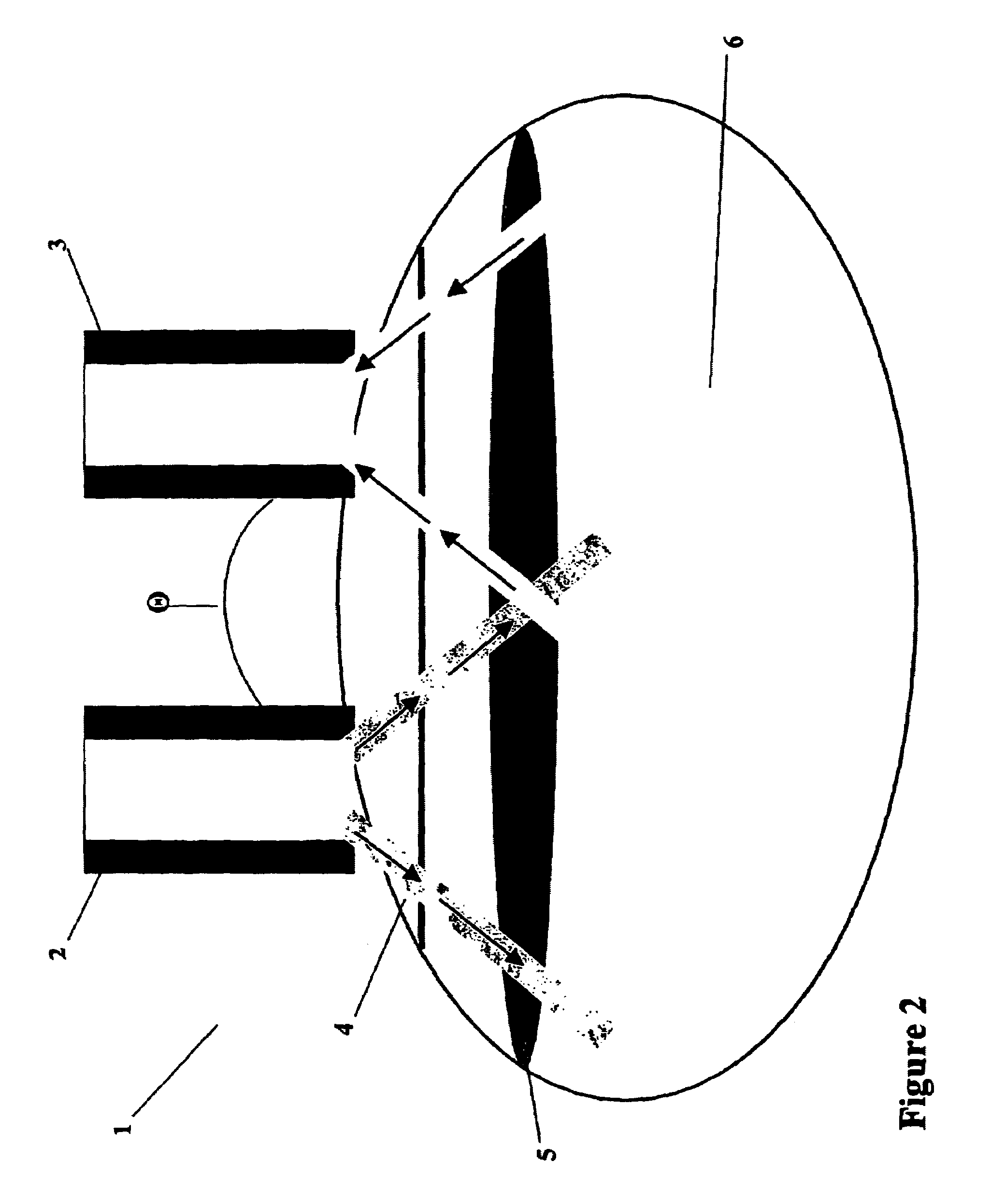Method and apparatus for noninvasive physiologic monitoring
a physiologic monitoring and non-invasive technology, applied in the field of non-invasive physiologic monitoring, can solve the problems of reducing cardiac output, affecting the normal function of the body,
- Summary
- Abstract
- Description
- Claims
- Application Information
AI Technical Summary
Problems solved by technology
Method used
Image
Examples
Embodiment Construction
[0024]The present invention is directed to pulse oximetry technology that overcomes the drawbacks of current pulse oximeters and provides a method of obtaining several physiological parameters previously undeterminable without invasive procedures. Specifically, the present invention provides a novel and useful method of utilizing previously unused DC signals to obtain non-pulsatile readings. These non-pulsatile readings are further analyzed to obtain accurate physiologic parameters which were previously unattainable through AC / pulsatile components or non-invasive methodology.
[0025]This novel methodology is based on absorbance of red and / or infrared light by non-pulsatile (DC) components including skin pigmentation, bone, other tissues, nonpulsating arterial blood and venous blood. The non-pulsatile components can be separated into categories, including those that remain constant over time and those that will change over time (durational, ignoring the pulsatile component). Constant p...
PUM
 Login to View More
Login to View More Abstract
Description
Claims
Application Information
 Login to View More
Login to View More - R&D
- Intellectual Property
- Life Sciences
- Materials
- Tech Scout
- Unparalleled Data Quality
- Higher Quality Content
- 60% Fewer Hallucinations
Browse by: Latest US Patents, China's latest patents, Technical Efficacy Thesaurus, Application Domain, Technology Topic, Popular Technical Reports.
© 2025 PatSnap. All rights reserved.Legal|Privacy policy|Modern Slavery Act Transparency Statement|Sitemap|About US| Contact US: help@patsnap.com



